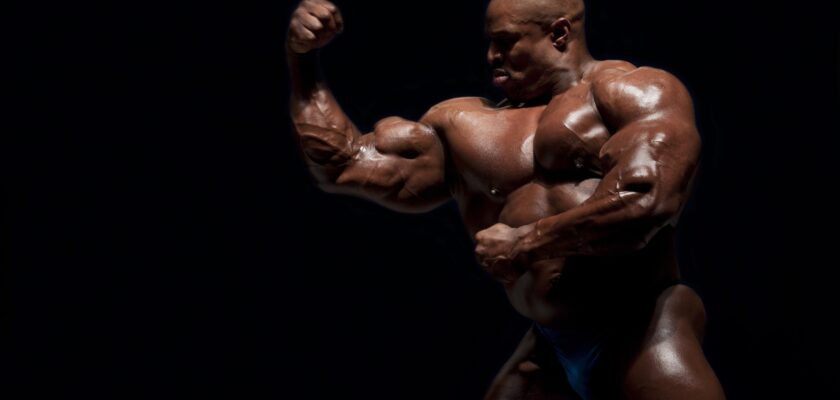Mr. Olympia is more than just a bodybuilding competition: it’s the pinnacle of the fitness world, where athletes come together every year to compete for the title of best bodybuilder in the world. In this complete guide, you’ll find out everything about Mr. Olympia: what it is, how it works, the rules and much more.
Since it was founded in 1965 by Joe Weider, the event has been the stage for displaying the strength, symmetry and extreme dedication of competitors, who not only challenge their own physical limits, but also raise the aesthetic and technical standards of the sport.
With categories ranging from classic bodybuilding to the latest fitness innovations, Mr. Olympia crowns champions and inspires a global community of fitness enthusiasts.
Open your Betano account and get up to R$1,000 in bonuses.
PIX payments, live games and super odds!
Click here to open your account!
All about Mr. Olympia: what it is
Mr. Olympia is a professional bodybuilding competition considered to be the most prestigious in the world. It was created with the aim of allowing champions from other bodybuilding competitions to compete against each other. The competition is organized by the International Federation of Bodybuilding and Fitness (IFBB).
History of Mr. Olympia
To continue the guide with everything about Mr. Olympia, it’s worth understanding the history of the competition. The first was held in New York, at the Brooklyn Academy of Music. Larry Scott won and repeated the victory in 1966.
In the 1970s, Arnold Schwarzenegger won six consecutive titles (1970-1975), bringing great attention to the sport. His popularity and charisma helped raise the profile of bodybuilding globally. In 1980, Schwarzenegger made an unexpected comeback and won his seventh title.
In 1982, Chris Dickerson won, marking the first time an African-American bodybuilder won the title. In 1983 and 1984, Samir Bannout and Lee Haney won respectively. Lee Haney would begin an era of dominance.
From 1984 to 1991, Lee Haney won eight titles in a row, setting a record that would only be equaled by Ronnie Coleman.
In the 1990s, Dorian Yates, known as “The Shadow”, won six consecutive titles. His extreme muscle mass and definition influenced a new era in bodybuilding.
From 1998 to 2005, Ronnie Coleman won eight consecutive titles, equaling Haney’s record. His impressive combination of size and symmetry made him a legend in the sport.
The 2000s
In the 2000s, Jay Cutler interrupted Coleman’s reign by winning two consecutive titles. Dexter Jackson won, bringing a new aesthetic and definition to the top of bodybuilding and Cutler regained the title for two years.
In the 2010s, Phil Heath dominated, winning seven consecutive titles and being recognized for his combination of muscle mass, definition and symmetry.
In the 2020s, “Big Ramy” retained the title in 2021, but lost to Hadi Choopan in 2022.
All about Mr. Olympia: categories
Mr. Olympia is a complex event involving several categories. Check out the full list:
- Open Bodybuilding: This is the most traditional and well-known category, where competitors display extreme muscle mass, definition, symmetry and ideal proportions.
- 212 Olympia: For bodybuilders weighing up to 212 pounds (around 96 kg).
- Classic Physique: Combines elements of classic bodybuilding with an emphasis on aesthetics, symmetry and proportions, without the extreme mass of the Open category.
- Men’s Physique: Focuses on a more athletic and aesthetic physique, with an emphasis on the upper body.
- Women’s Physique, Figure, Fitness, Bikini and Wellness: Various categories for women, each with different judging criteria, from muscle mass and definition to aesthetics and presentation.
How does Mr. Olympia work?
To compete in Mr. Olympia, bodybuilders must qualify through a series of competitions throughout the year. Champions from the previous year qualify automatically, while the top five finishers from the previous year also qualify automatically.
Several competitions throughout the year serve as qualifiers for the Mr. Olympia. The winners of these competitions qualify for the Olympia.
Competitors who accumulate enough points through good placings in qualifying competitions can also qualify.
Competition Phase
The Mr. Olympia competition is divided into several phases. Competitors are compared side by side in various compulsory poses. The poses include double front biceps, side chest, double back biceps, among others.
Each competitor gives an individual presentation to show off their best poses. And in the finals, each competitor has a limited time to perform a choreographed routine to music of their choice.
The judges evaluate the competitors based on various criteria, depending on the category:
- Muscle Mass: Size and volume of the muscles.
- Definition: Degree of separation and sharpness of the muscles.
- Proportion and Symmetry: Balance between different muscle groups and symmetry of the body.
- Presentation: Ability to pose and present muscles effectively.
- Aesthetics: General appearance, which includes skin condition, absence of deformities and overall presentation.
Scoring
The judges give scores to the competitors based on the criteria mentioned. The score is usually an average of the judges’ scores, and the competitor with the lowest total score (reverse points system) is declared the winner.
Mr. Olympia winners receive cash prizes, trophies and, in the main category, the famous Sandow statue.
In addition to the cash prizes, the champions gain worldwide recognition and often lucrative sponsorship contracts.
Mr. Olympia continues to be the epicenter of world bodybuilding, reflecting the physical evolution of competitors over the decades and the cultural and inspirational impact it has on millions of people around the world. Now that you know everything about Mr. Olympia, check out our website to find out more about this universe:



